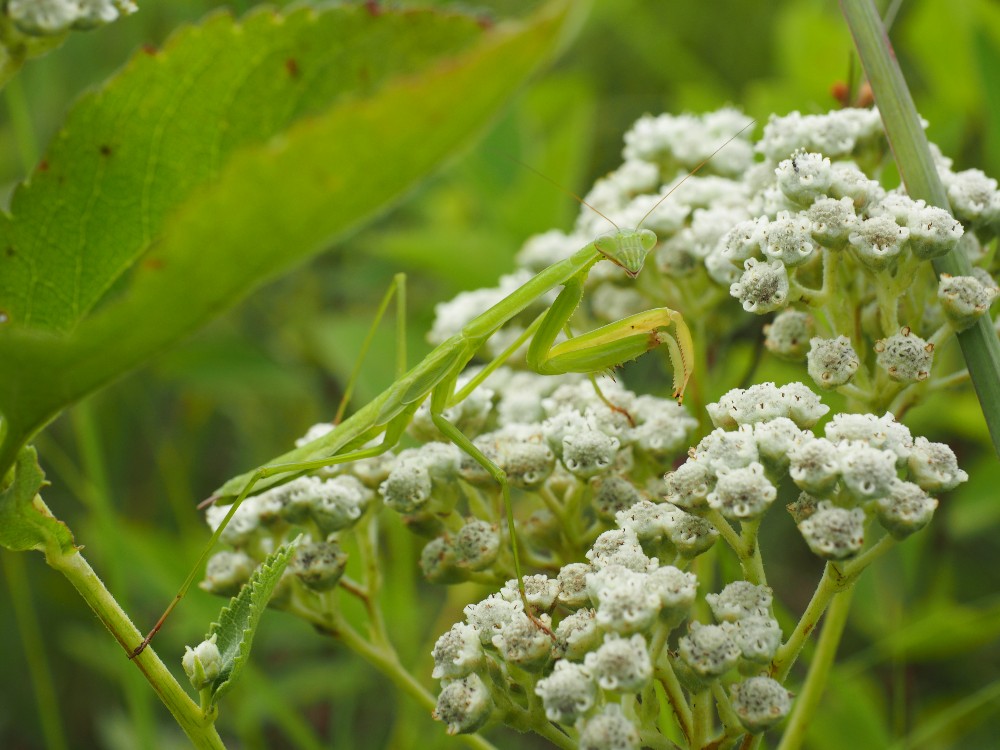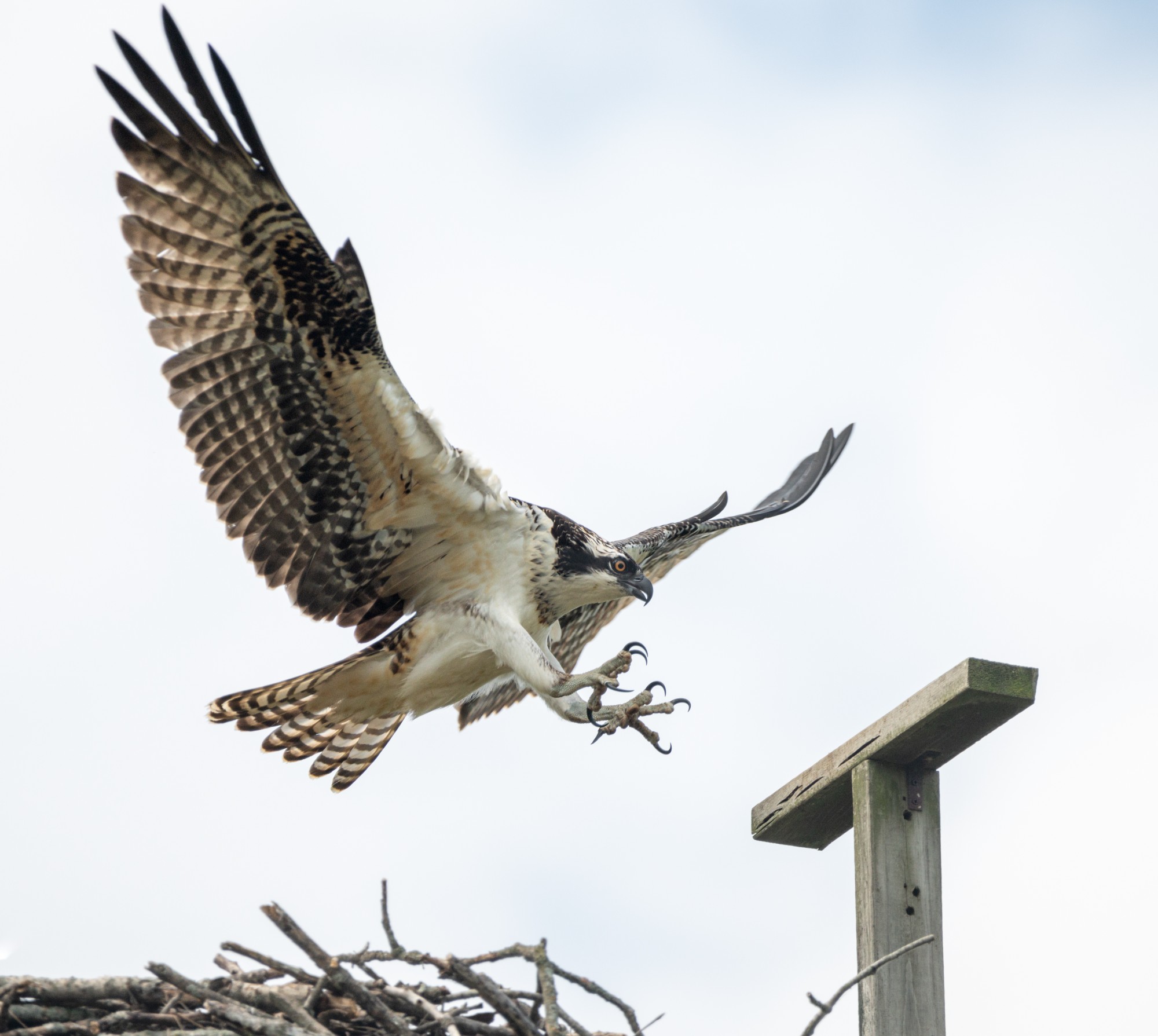I was working in a garden earlier this summer surrounded by hues of green and the heady smell of soil. I was so fascinated by tilling the cool earth by hand, making drawings and furrows with my fingers, that I did not notice a long green shape moving slowly across my viewscape.
Looking up, I was nearly face to face with bulbous eyes staring back at me. With fiendish-looking pincers bent as if holding something precious and alien eyes roving curiously, I instantly recognized it was a praying mantis sharing my garden.
These insects have a distinctive shape. A praying mantis has a triangular head with two globe-shaped eyes capping opposite ends. A black dot in the middle of each eye looks like a pupil and, in a way, it is. It is called a pseudopupil and is part of a unique system that gives praying mantises a big advantage in their machinations to ambush prey.
Like humans, praying mantises use both eyes to create three-dimensional sight. But not all parts of their eyes have the same function. Some parts can focus in high definition and other parts see movement and light. Together, this creates depth. By moving their compound eyes, their brain can gather enough information to detect even the most well camouflaged prey.
So, when it seems like the black dot of a pseudopupil is looking right at you, it is.
Praying mantises are efficient, voracious, and ambitious carnivores. They hunt other insects, spiders, frogs, lizards, and even hummingbirds. Their strategy is one of patience and surprise. Moving at a glacial pace, mantises stalk their intended meal until close enough to snare their target into their distinctive front legs. In the blink of an eye, prey is caught in two razor-lined vices while being devoured alive by powerful mandibles.
It is a merciless hunt. I’m thankful humans are not on the menu.
When encountering their own predators, praying mantises do not back down. Instead, mantis behavior follows the philosophy of offence is the best defense. They make their bodies seem larger by raising wings, standing tall, swaying back and forth, and sometimes charging.
Many people can identify a praying mantis, but not all mantises are alike. There are over 2,000 species world-wide. Three species are commonly found in the Midwest, though only one of them is native to the United States.
In our gardens, we will most likely run across the Chinese mantis (Tenodera sinensis). In the 1890’s, this species was accidentally introduced from Asia to Philadelphia. Like many invasive species, it has since spread throughout the Midwest. Its large size, up to 5 inches, and aggressiveness has led it to out-compete the smaller native species.
Additionally, these mantises are renowned as being adaptable to humans and even tamed as pets. You can find them in pet stores. Like many invasive animal species, humans release them into the wild thinking they are giving their pet a good life. But unknowingly, they also introduce a deadly disruption to the ecosystem.
The other most common mantis species, unfortunately also non-native, is the European mantis (Mantis religiosa). It’s about the same size as the Chinese mantis, but typically bright green in color though its color variation includes yellow and brown too. Without looking under the praying mantis’ forelegs for a small yellow spot only found on the Chinese mantis, it is difficult to tell the two species apart.
The native praying mantis you will find in the Midwest is the Carolina mantis (Stagmomantis carolina). It is smaller than the Chinese and European mantises at only 2 inches in length. It is a tan color, blending in perfectly with fields and forests. South Carolina’s legislature designated the species as the state insect because it is, “a perfect specimen of living science” for school children.
Many gardeners see praying mantises as beneficial insects because they eat pests known to destroy crops. However, these hunters make no distinction between pests like aphids and critical pollinators like bees. Additionally, the large invasive species like the Chinese mantis eat more and different wildlife than our smaller native mantises. The Carolina mantis does not hunt hummingbirds. Ultimately, it is worth considering if the non-native species are doing more harm than good.
Despite knowing the pitfalls of having a ruthless predator in the garden, it was still exhilarating to see a praying mantis up close. I imagined how ominous the experience would become if I were just a few inches tall and saw its head swivel slowly in my direction until its roving eyes locked onto me. As its mandibles chewed the air and pincer legs twitched, it made me thankful (again) that I am not a praying mantis delicacy.
Kelley V. Phillips is the Communications & Outreach Manager for Red-tail Land Conservancy. She strives to cultivate wonder in nature and action to protect it.




